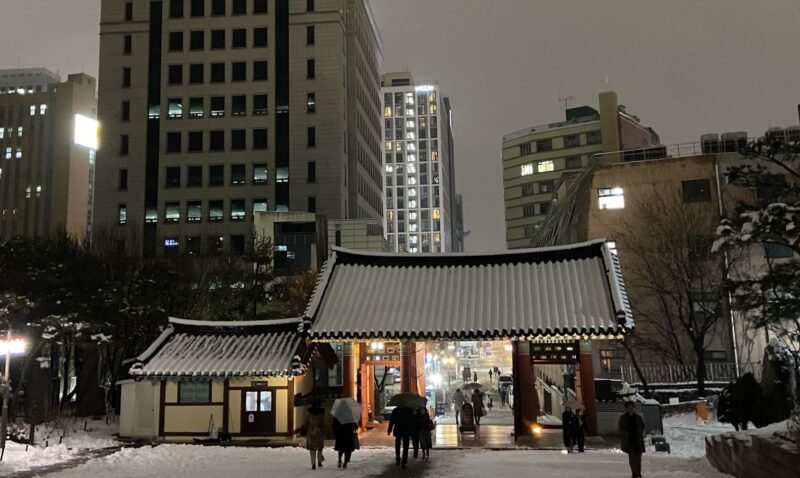Seoul is very metropolitan: webbed with highways, illuminated at night, a definition of urban. Forty-story office buildings, subway network underground, bus network overground, Ubers and lightning-fast delivery and robot waiters and just about a zillion ways to get around—and even more to do. With rapid growth comes rapid loss. I think something in this city’s been run dry, but I can’t quite name it at the moment.
Not completely run dry, though. Because in the nooks and crannies of the metropolis is art. Poems gleam on the sliding doors of the subway station. Mountains, softened with age, rise serenely in between highways—the mountainous nature of the Korean terrain has never quite been tamed by the construction and asphalt. Pine trees grow everywhere. They are twisted, green-needled, grandfatherly remnants of the ancient Korean spirit, and they are the one thing a 1824 and 2024 streetscape have in common.
“Landing Point” was a small art exhibit at Arario Gallery that I went to see last week. The gallery was built in a traditional Hanok-style in the otherwise-trafficky neighborhood of Jongno-gu. The artist’s statement described the frames or canvases in which the paintings are contained as the landing point, since they are a temporary resting place for the painter’s inspiration before it flows into another dimension. Maybe a creative spirit, an artistic muse, thirsting and forgotten in this technologized city, travels wearily throughout the land, using the nooks of subway stations as its landing point. Or points. If so, I’d like to go around the city, discovering them one by one. To explore art in Seoul—or, to characterize them as two separate entities, art and Seoul—because I truly love both. With my heart and soul.
